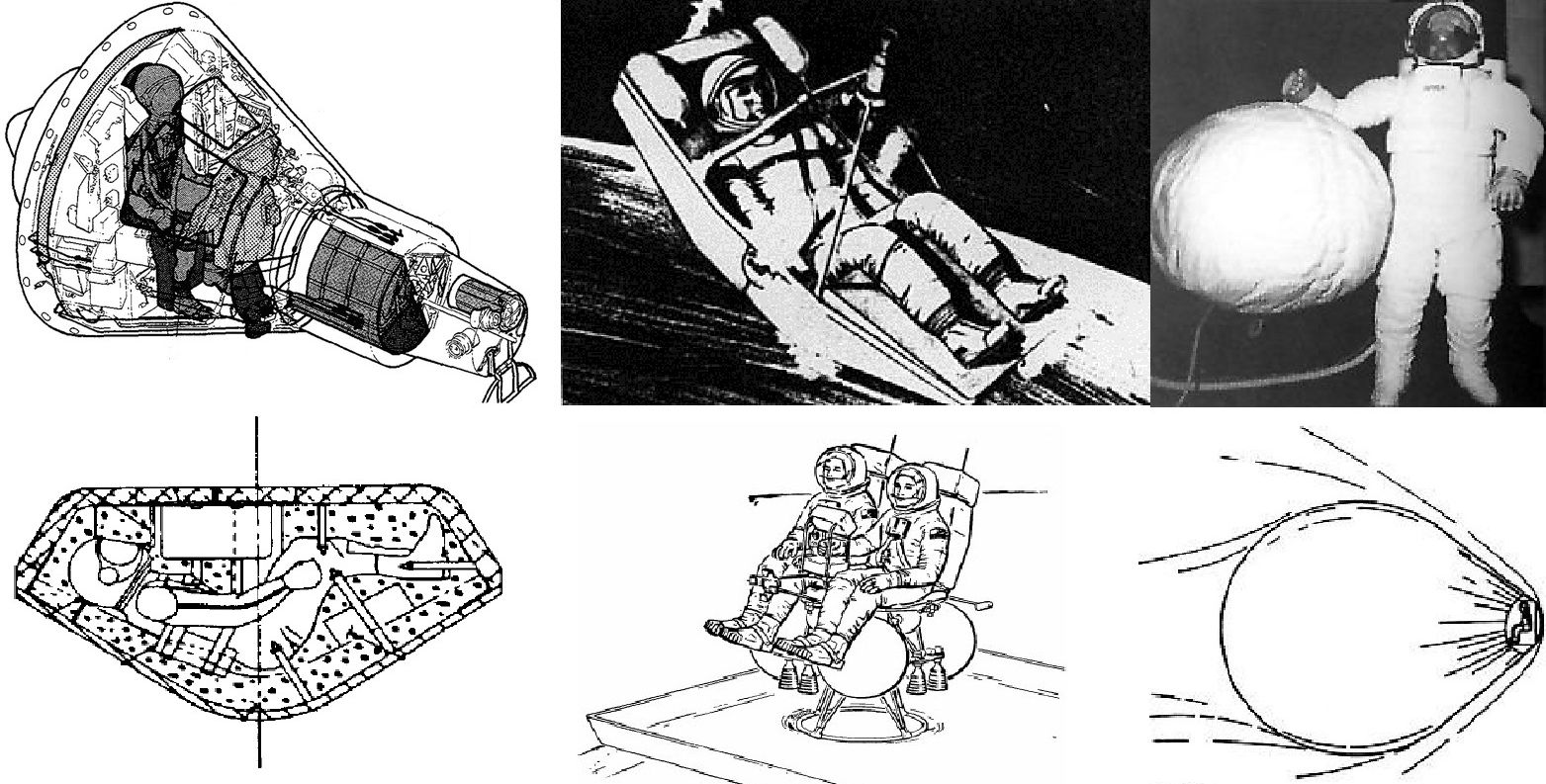
In the film
"Martian" there was a moment when the main character is launched into Mars orbit in a ship with a piece of tarpaulin instead of a nose cone, to which he is reasonably indignant. However, in reality, life at the turn of the 60-70s as a rescue device for astronauts developed designs that may well give odds to most of the craziest designs from the Kerbal Space Program.
Mercury
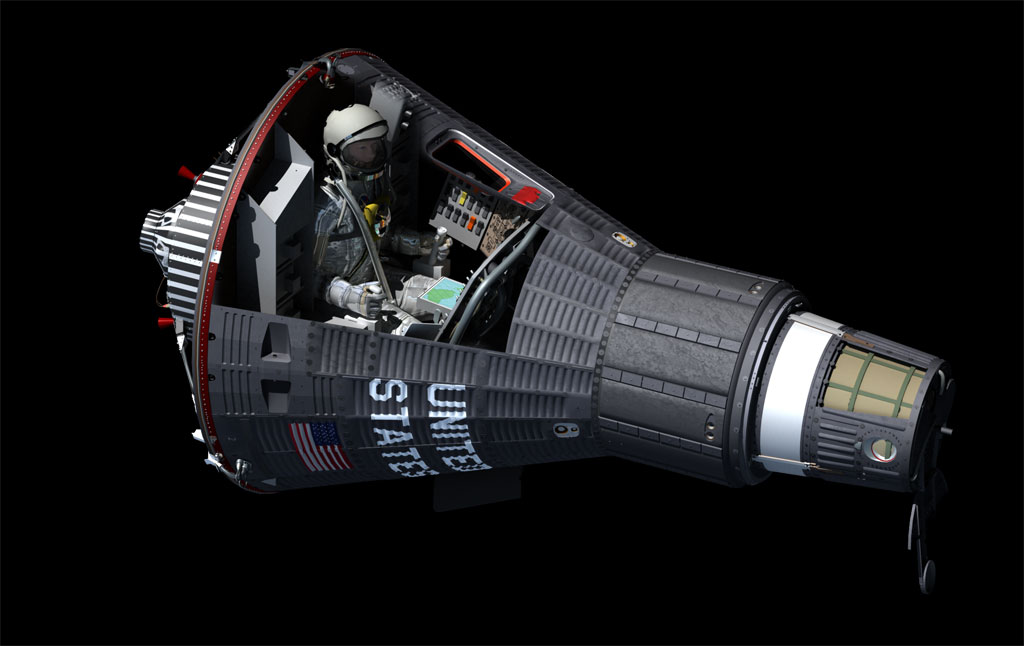
The launch of the
first satellite took the United States by surprise: by that time, the United States did not have large rockets and if our cosmonauts used the rather spacious cabin of
the Vostok weighing 4.7 tons, the American astronaut at the same time had a huddle in the minimalist
Mercury capsule weighing only 1.4 tons. In general, she had no problems before the flight of
Mercury-Atlas-9 with
Gordon Cooper : during this 34-hour flight there was a short circuit in the ship’s central power supply line, and therefore only the radio (powered by a separate battery) and clock on Cooper's hand.
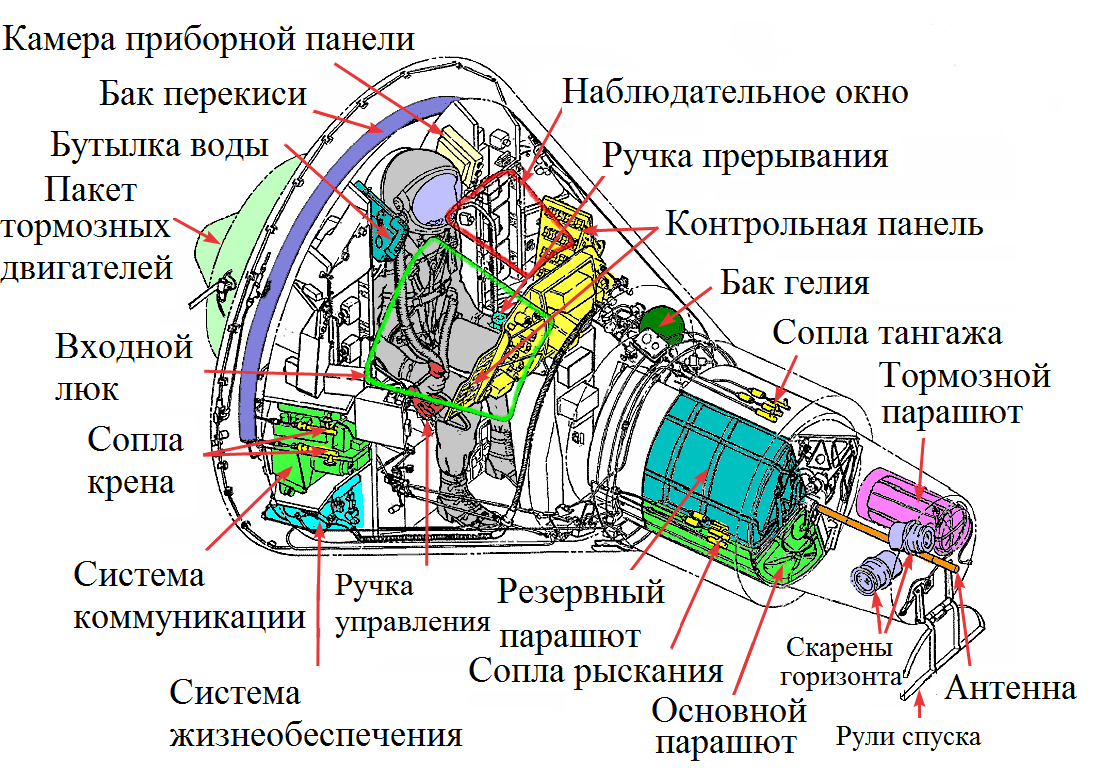
With the help of CAPCOM, the person responsible for communication with the astronaut (who was speaking on this flight by
John Glenn ), he was able to correctly orient the capsule manually and give a braking impulse for de-orbiting. As a result, it became one of the few manual landings in the history of manned space flight, as well as the most accurate landing under
the Mercury program with a deviation of only 6 km from the calculated point. According to the program,
another flight of 3 days duration was to be carried out, but after this flight of Cooper, NASA decided not to tempt fate and canceled it.
Space shuttle
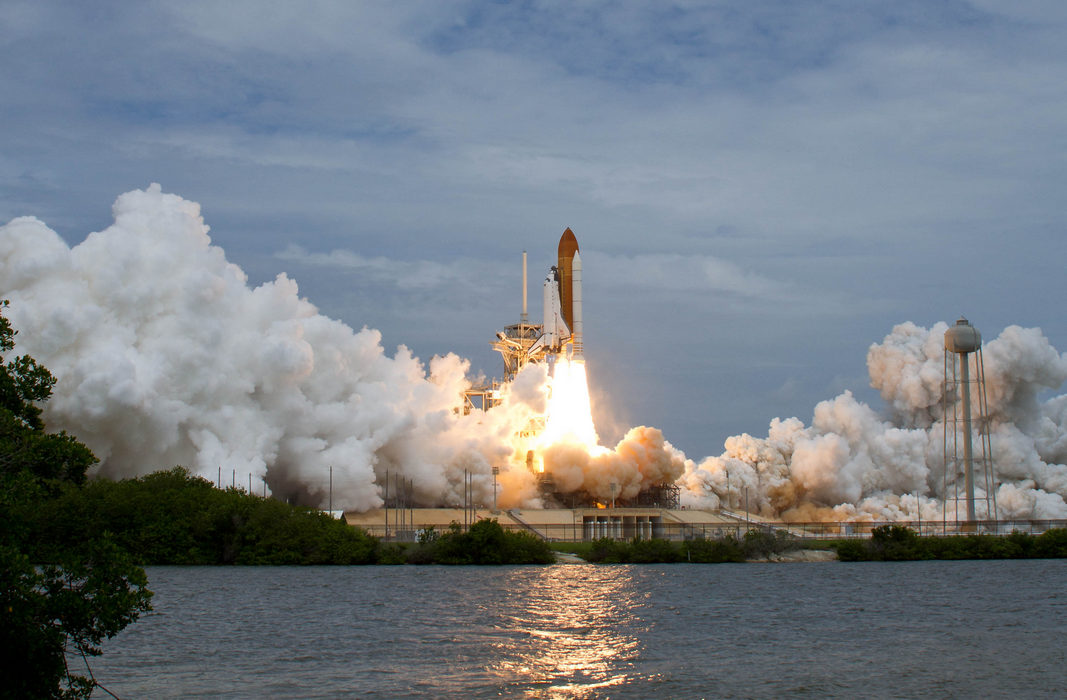
Despite the rather high reliability, the Shuttle did not have a
SAS , so the evacuation of the crew from the ship in distress was carried out in rather original ways. In particular, from the beginning to the end
of the Space Shuttle program, the crew’s evacuation from the launch pad was ensured by the fact that the astronauts had to independently detach themselves from the chairs, get out of the Shuttle and get to the special baskets to unhook them from the bindings, after which they would leave ropes under the action of gravity. On the ground, baskets were caught with a construction similar to an
aerofinisher :
In case of an emergency landing (which, by the way, there were no Shuttle flights for 135 flights), NASA
provided for the possibility of returning the Shuttle to
Cape Canaveral or to one of the airports in Europe and Africa (if the speed collected by the shuttle was enough for a transatlantic flight). As a glider, the Shuttle had rather mediocre aerodynamics (the
aerodynamic quality was 4.5 versus about 30 for normal gliders), and the pilot simply wouldn't have a chance for a second run, so a strip of much larger area was required for him than for a commercial aircraft. Because of this, NASA even had to upgrade Gambia Yundum Airport at its own expense, which ultimately attracted the
attention of ufologists to it.
Before each launch of the Shuttle, 2 airports were selected from this list on the way to it, and if the weather was unsatisfactory for landing at these airports, the launch was canceled even in ideal conditions at Cape Canaveral itself. Unfortunately, such precautions could not save the
Challenger and
Columbia from disaster. So after the first of these accidents, astronauts
began to issue parachutes, and the Shuttles installed guides retractable when the hatchway was open, intended for the crew to safely jump out of the planning Shuttle without hitting the wing. After the second accident, they also took a number of measures to improve reliability, but this could not save the program itself.
Pre
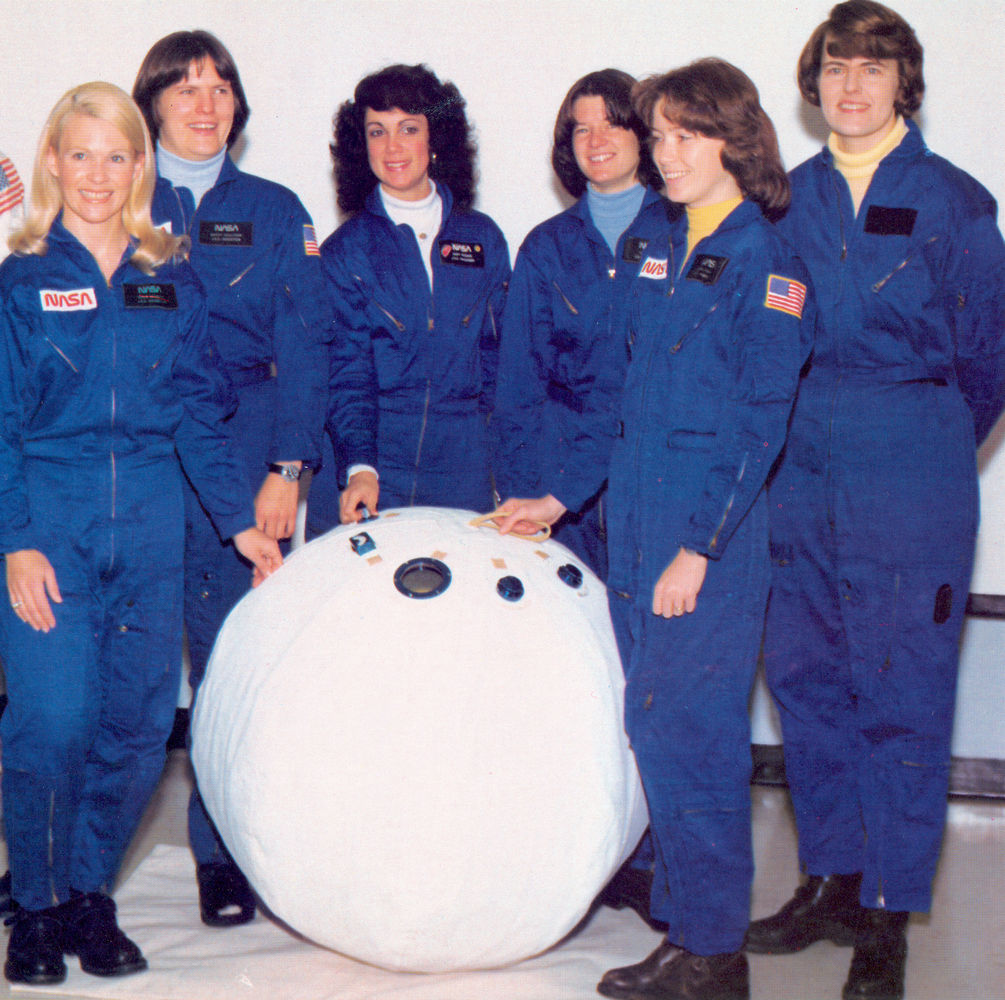 Personal rescue enclosure
Personal rescue enclosure (individual rescue case) - was a ball with a diameter of 86 cm and had three layers of fabric (
urethane ,
Kevlar and an outer white layer for thermal protection), with a small porthole made of
Lexan and a zipper for entry. The system was developed in the 70s-80s to rescue the Space Shuttle astronauts in distress, if there were not enough space suits for everyone (standardly, there were only 3 spacesuits on board, with an average crew of 6 people). Despite the seemingly small size, there was enough space for an astronaut to accommodate it:
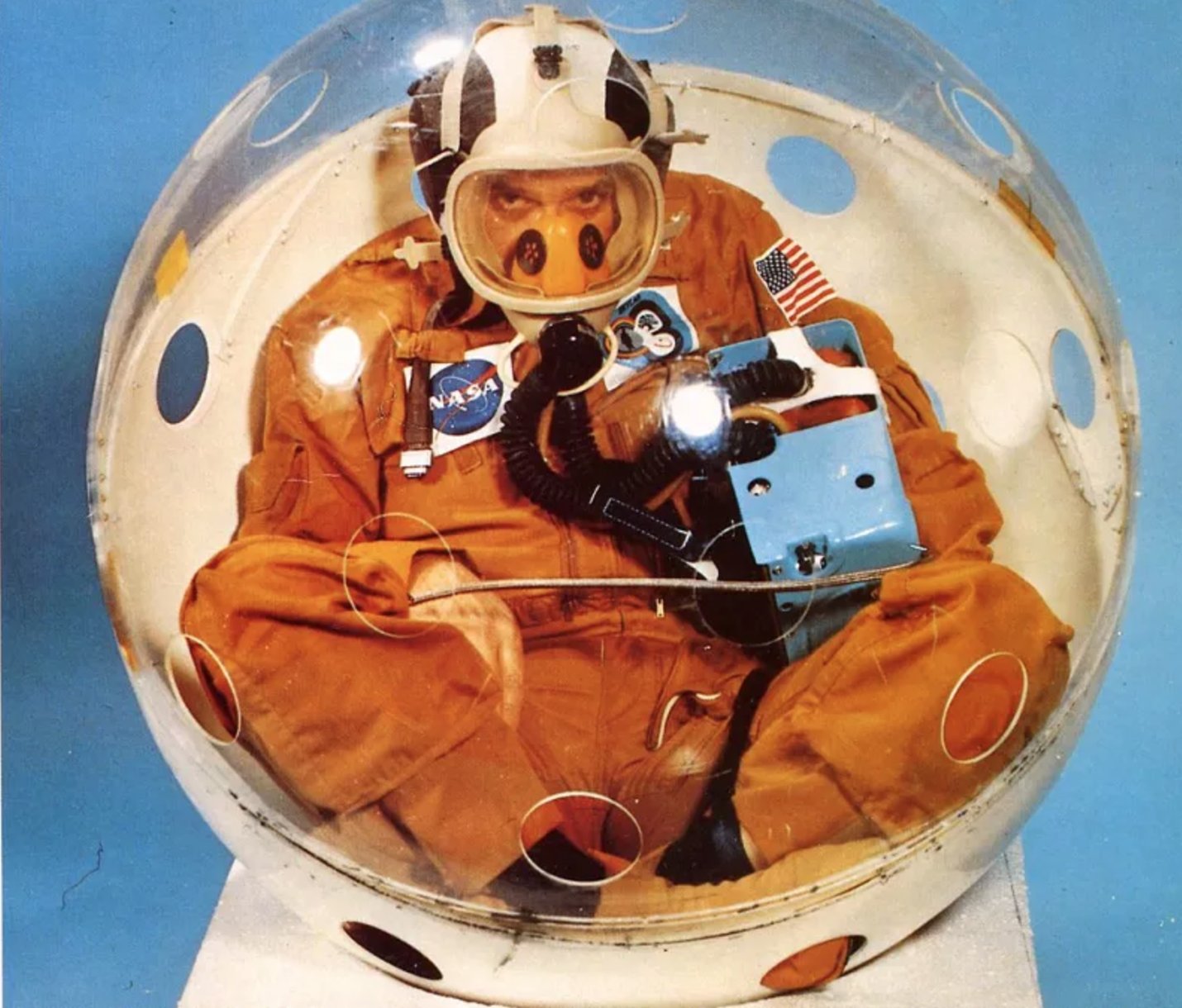
The astronaut had to move the ball in a full-fledged space suit, and inside it there was a cylinder with oxygen and a carbon dioxide absorber with a reserve of about an hour. The lightning bolts in the spacesuit designs had already flown into space by that time (in the
Gemini-7 mission in 1965) and showed their reliability:
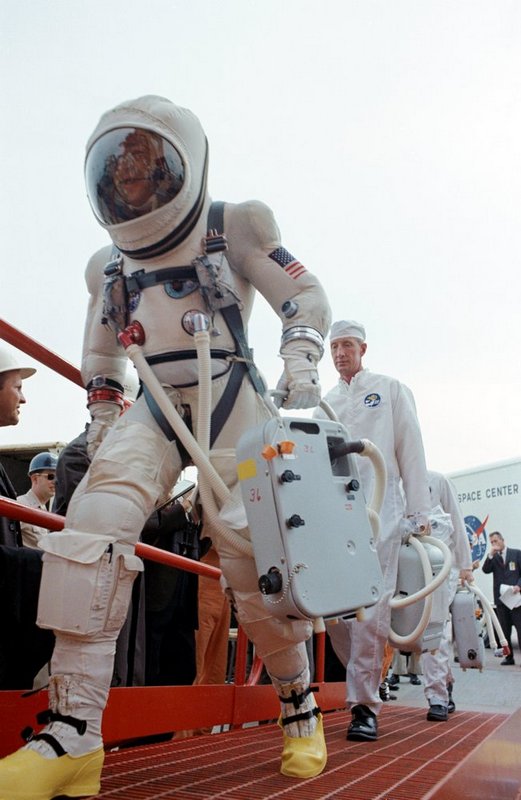
So this design was quite viable, although it looked wild at first glance:
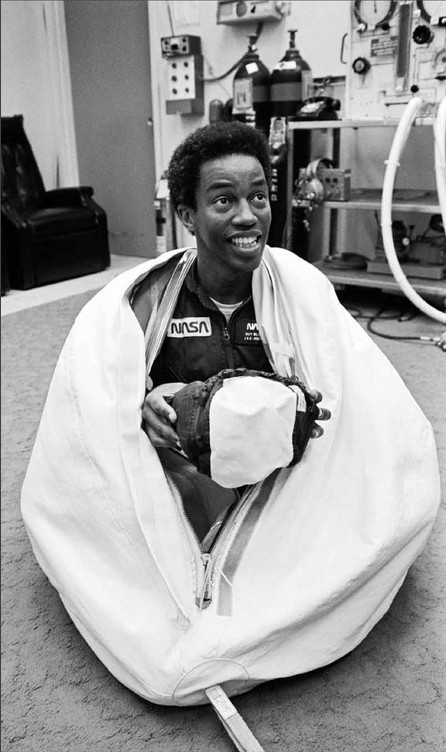
Theoretically, such a system could be used to rescue the Space Shuttle "Columbia" (
part 1 ,
part 2 ,
part 3 ), but in fact after the first catastrophe all the chances of being two Space Shuttles in space simultaneously fell to almost zero, and in case the rescue operation was prepared it was possible to catch one and prepare three of the spacesuits, while the Shuttle would be ready for the start. As a result, the project did not receive support from NASA or the Pentagon and was closed.
MOOSE
MOOSE ("elk" in literal translation) or Man Out Of Space Easiest (the simplest human return from space) is a rescue system developed in the 60s weighing only 126 kg (of which 59 kg accounted for the heat-insulating foam) from orbit in case of ship damage.
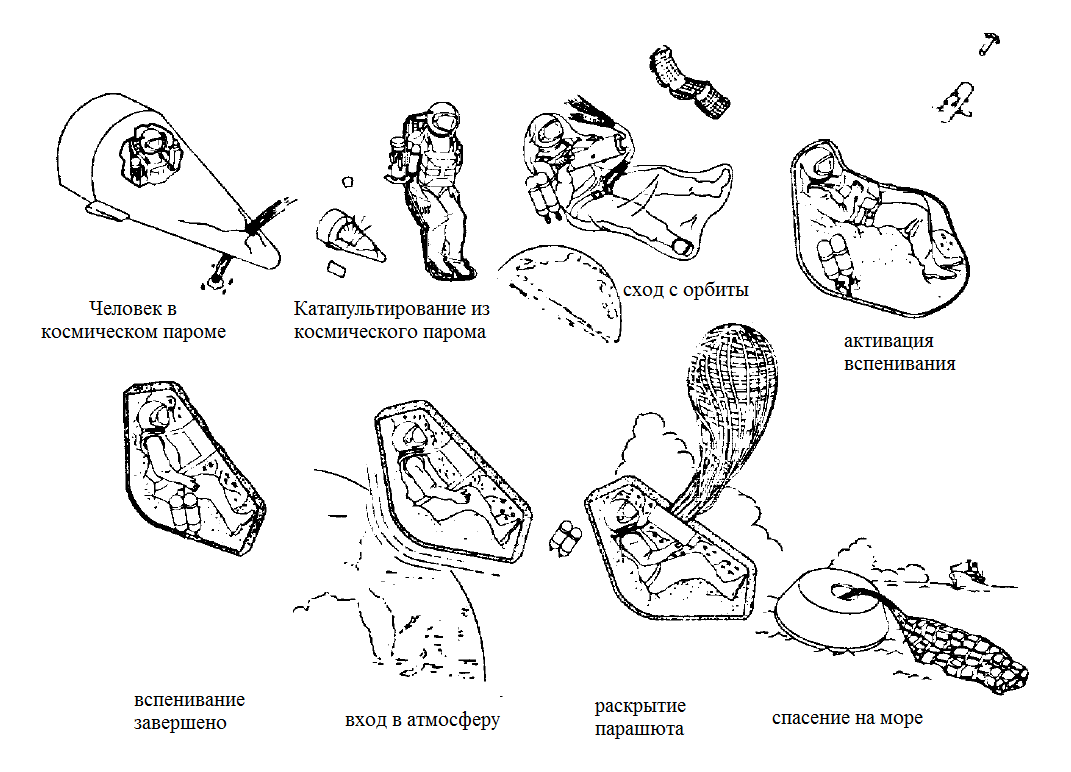
After the ejection from the ship, the pilot had to get into a plastic bag from the
mylar and fill it with a special fast-setting foam from the canisters. The shape of the bag gave the outer wall of the foam the necessary shape to stabilize when entering the atmosphere, while the inner wall assumed an anatomical shape of the body, protecting the astronaut's body from overload. Thus the minimum volume was provided (the device occupied the volume of approximately
two suitcases ) and the weight of this design.
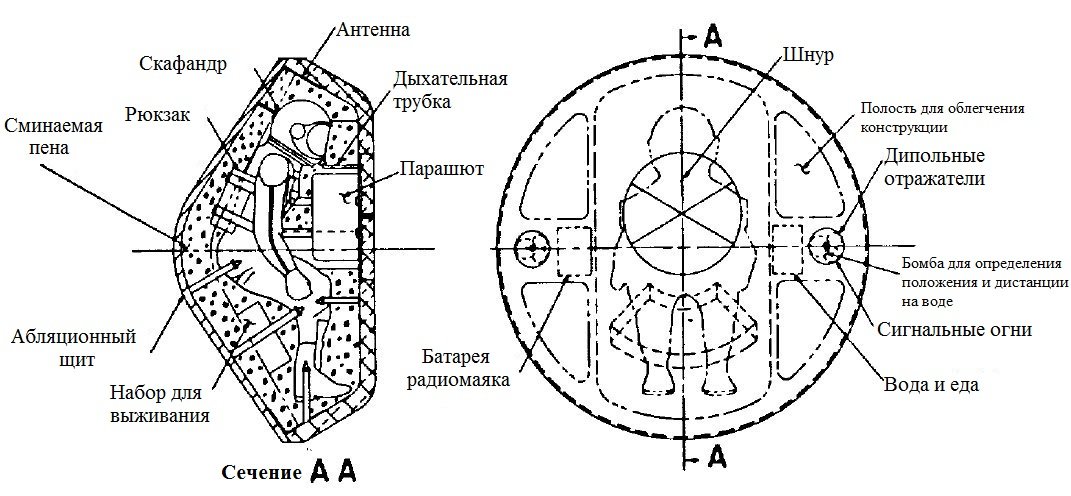
After hardening of the foam, the astronaut had to give the impulse of the arch from the orbit. For this, a special device was provided in the form of an anchor with two engines at its ends, which made it possible to issue a braking impulse in the opposite direction (so that the pilot did not have to turn 180 ° to give the impulse and back to properly orient to enter the atmosphere). Due to the fact that
solid rocket engines were used for this, the pilot had only one chance to correctly carry out this maneuver.
At 9 km parachute opened. In case of landing on land, in addition to the heat-insulating role, foam also served as a shock-absorbing, quenching parachute descent rate. The structure also included a radio beacon with a battery, a survival kit and medicines weighing about 16 kg. Thermal insulation protection of this device was tested during
the Mercury program , but in general this General Electric project did not receive development.
Paracone
 Paracone
Paracone is a development by Douglas, also aimed at saving an astronaut from a ship in distress. The design had to be built into the ejection seat and unfurled after the ejection. Due to the large size, it was supposed to reduce the heat load on the structure when entering the atmosphere (which allowed only refractory materials to do without
ablation ), as well as reduce the fall rate to 42 km / h from the ground, which in turn allowed to do only the crushed part of the bottom structure for a soft landing.
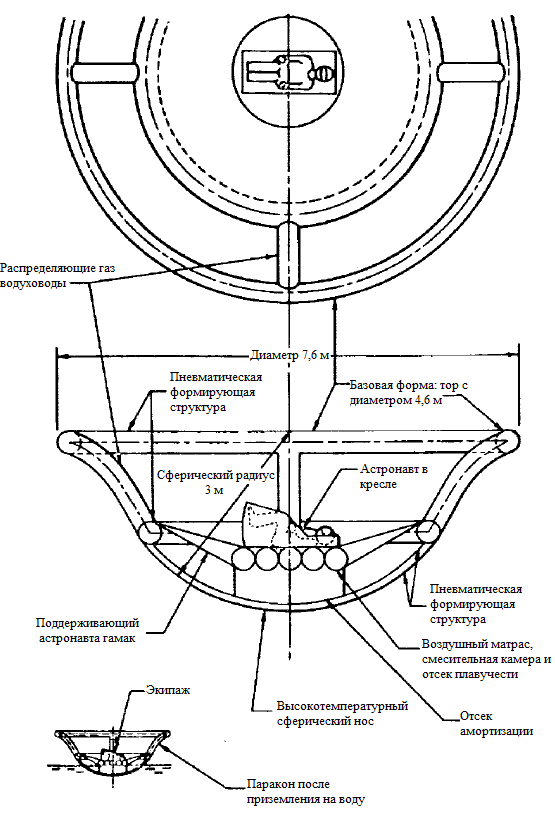
The payload mass (astronaut with spacesuit) was limited to 89 kg, and the total mass of the structure was 227 kg. Overload on entry into the atmosphere should have reached 9.6g.
SAVER
Rescue system company Rockwell 1966 development. It was similar to the idea of Paracone for embedding in an ejection seat, but provided for the use of a 10-meter inflatable balloon for braking, the right materials for the production of which at that time was not true. The project did not go beyond the development of common concepts.
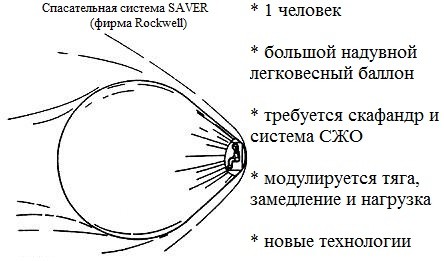
In addition to these systems,
many other projects were developed to rescue astronauts from damaged spacecraft and stations. However, the asteroid threat, because of which most of these systems were developed, was clearly overestimated - in fact, the only threat to the ISS at the moment is space debris that is systematically monitored, and if there is a threat for the station, the ISS makes an adjustment of the course so that the garbage does not could be dangerously close, so the need for these systems was not confirmed.
Lunar Escape Systems
As you know, the
Saturn-5 launch
vehicle has been and remains the most powerful rocket for the past 50 years (and will remain so for many years to come, at least until the appearance of the heavy version of
SpaceS SLS or
BFR ). Nevertheless, she was not omnipotent: in particular, almost from the very beginning of the project, the entire ship had to be abandoned at once (as a result of which the Command and
Lunar module appeared ), and later with the increase in ship weight, the wall of hydrogen tanks and the second stage oxygen had to be
combined to meet the weight limits. Modernization of the rocket and the ship went almost to the end of their production, which
almost killed the crew of Apollo 13, but eventually allowed to use the
Lunar car from
Apollo 15 and increase the time spent on the Moon from 1 day to 3, which dramatically increased the mobility of astronauts . In the future, the time spent by the astronauts on the moon was going to be increased to two weeks.
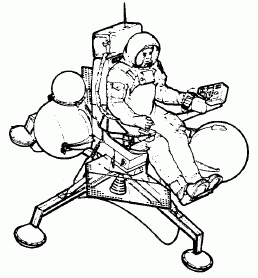
Some of the improvements by the time the Apollo program was closed did not have time to be implemented, the other part was discarded due to its riskiness. In particular, the
Lynar flyer from North American fell into the second category: this 618-pound unit should have been able to lift 1 astronaut and up to 168 kg of cargo, carrying it at 3.2-8.5 km at a speed of 300 km / h . As a result, this idea was abandoned in favor of a lighter and more reliable Lunar vehicle. But they did not forget about it, and when the question arose of how to increase the safety of astronauts on the moon (and the lunar module had only one engine and in case of its refusal to return astronauts it would have been impossible) to this idea returned again. So Lunar Escape System (Lunar Rescue System) or LESS was born:
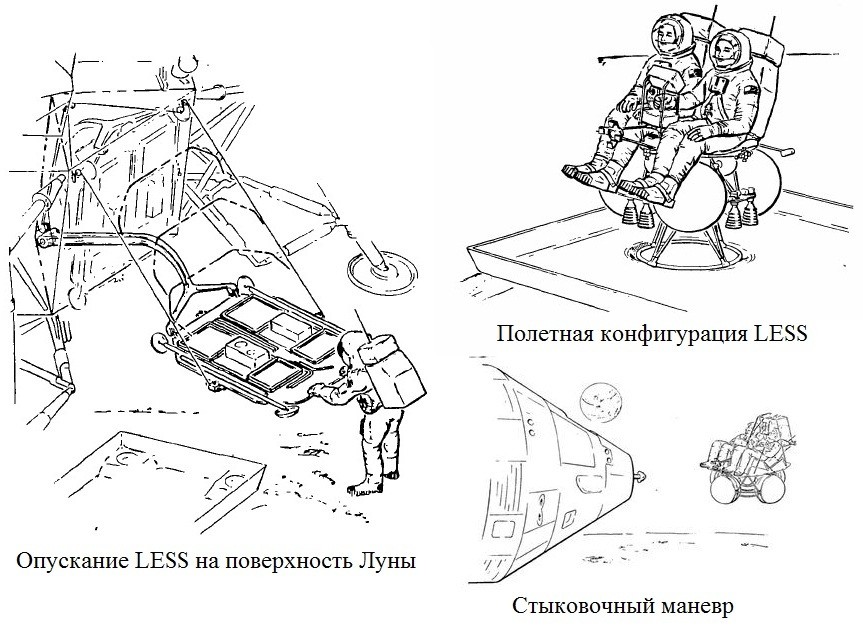
What could be crazier than two chairs flying over the Moon, suspended above several tanks filled with
aerosin and
amyl (comparable in toxicity to agents), among which rocket engines are attached? And yet the madness did not end there: before going on a flight, an astronaut would have needed to put this structure together and fill it with fuel from the tanks of the take-off stage, which failed at the wrong time.
The device did not have a navigation system, and as
in the case of Gordon Cooper, the only navigation devices to assist astronauts would be radio and clock. Well, so that the astronauts do not relax at all, as a means of controlling the roll of the device was considered ... the pilot's inclination of his own body. Since there were still 12 long years before the
MMU , the pilots of the Command Module and LESS needed to dock, after which two astronauts would move to the Command Module and go back to Earth.
Jebedi Kerman probably would have been pleased with this design. Some players in the
Kerbal Space Program, sending their Kerbonavts with only one chair
on the Moon or the
planet Yilu, even without suspecting that their designs are significantly inferior in their insanity to what NASA was preparing to do half a century ago with real astronauts.

Among the Soviet vehicles, the most suitable for this category was the
“Spiral” rescue capsule, which was developed at the time when there were projects of warships in the US, so the developers fully considered the option of saving the pilot from the “wrecked” apparatus. For this, the pilot was housed in a detachable capsule that had its own engines and thermal protection required for safe entry into the atmosphere.

And may the force be with you in the new year.